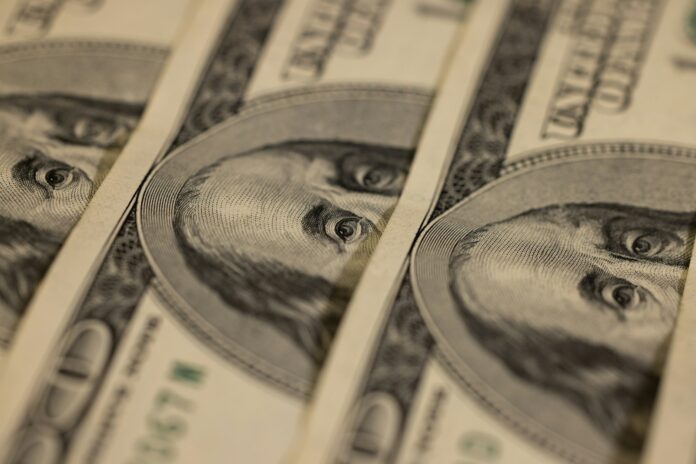Key Takeaways:
• President Trump claimed inflation is “solved” and costs are down.
• Official data shows inflation rose to 2.9% in August, up from 2.7%.
• Gas prices average $3.19 nationwide, with spikes above $4.60.
• Grocery items like coffee and beef saw double-digit price jumps.
Has Trump Solved Inflation?
President Donald Trump told viewers of a popular morning show that he has already fixed inflation. He said energy costs are falling and gas will soon be just two dollars a gallon. Moreover, he boasted that he has solved “just about every problem.” However, many Americans still pay more at the pump and checkout line. So did Trump really end inflation, or are families still feeling the pinch?
Trump’s Bold Claim on Inflation
Last Friday morning, Trump spoke on live television. He declared, “I’ve already solved inflation. Costs are down.” Then he pointed to energy prices, predicting $2 gasoline soon. He ended by saying he fixed nearly every problem facing the country. On the surface, this claim sounds hopeful. Yet, many people wonder if it matches what they see every day.
First, consider your last trip to the gas station. The national average price sits around $3.19 per gallon. In some areas, drivers pay as much as $4.65. Even the lowest prices hover near $2.70. Therefore, the idea of $2 gas for everyone seems distant. In fact, one observer on social media asked why gasoline is still far above that mark.
What the Numbers Say About Inflation
Official numbers from the Labor Department paint a different picture than the president’s claims. In August, consumer prices climbed 2.9% compared to last year. This increase outpaced July’s 2.7% rise. Thus, overall inflation edged up, not down.
Moreover, grocery costs jumped 0.6% in just one month. That marked the largest month-to-month jump since August of 2022, when grocery prices were surging. Meanwhile, gas prices alone rose 1.9% during August. As a result, the everyday costs for families kept growing.
Why Prices Remain High
Several factors help explain why Americans still pay more for basics. One is the tariffs placed on imports. These taxes on foreign goods raise costs for stores and customers alike. In turn, higher tariffs push up prices on items from fruits to furniture.
Another factor is energy. While Trump pointed to falling oil costs, global events can suddenly reverse that trend. A rally or conflict in oil-producing regions can send gas prices back up. Thus, energy costs stay somewhat unpredictable.
Finally, supply and demand still influence the market. When demand stays strong but supplies remain limited, prices climb. For example, coffee harvests faced weather problems, cutting supply. That drove coffee prices up nearly 21% over the past year. Similar patterns hit beef, apples, bananas, and more.
Effects on Everyday Families
When inflation rises, families feel pressure. A small grocery bill can balloon into a large one. Think of a parent buying coffee, meat, fruits, and vegetables. With coffee nearly 21% costlier and beef steaks up nearly 17%, budgets shrink fast. Even fruits like apples and bananas climbed in price.
Beyond groceries, higher fuel costs make everything else more expensive. Transporting goods to stores costs more when a truck’s tank runs at higher rates. Therefore, a rise at the pump ripples across almost every purchase. In short, families encounter a cycle of higher costs that is slow to break.
Promises Versus Reality
During his campaign, Trump vowed to lower prices “on day one” if re-elected. Yet, today’s data shows the opposite for many staples. Grocery categories, from dairy to cereals, remain pricier than a year ago. Some saw their biggest monthly leap in three years.
Supporters cheer the president’s confidence. They believe bold promises can sway markets and boost morale. Critics argue that mere words cannot reverse deep economic trends. They point to tariffs, global demand, and supply challenges as tougher issues to solve.
How Experts View Inflation
Economists agree that inflation stems from multiple sources. They say monetary policy, government spending, and global trade all play roles. When the government prints more money or spends heavily, prices tend to follow upward. Trade barriers and tariffs can also worsen price hikes.
Therefore, solving inflation requires coordinated steps: adjusting interest rates, cutting unnecessary spending, and easing trade restrictions. Some experts suggest that simply saying inflation is “solved” has little real impact without action.
What Lies Ahead?
Looking forward, projections vary. Some economists think inflation will cool by year’s end as supply chains heal. Others warn that energy or geopolitical shocks could spark another wave of price hikes. In any case, the debate over solutions will continue.
Many Americans will watch upcoming reports closely. Each new inflation reading will either support Trump’s claim or prove it premature. Until prices truly ease, shoppers, drivers, and families may remain skeptical of bold statements.
Key Points to Remember
• Inflation rose in August, not fell.
• Gas sits above $3 per gallon in most places.
• Tariffs and global factors keep grocery costs high.
• Experts say actions, not words, truly tame inflation.
Frequently Asked Questions
What exactly is inflation?
Inflation means that prices for goods and services rise over time. When inflation is high, your dollar buys less than before.
Why does Trump say inflation is solved?
He aims to boost confidence and highlight energy price drops. Yet data shows overall prices still climb.
How do tariffs affect prices?
Tariffs are taxes on imports. When they go up, companies pay more, and shoppers end up paying higher prices.
When might inflation go down?
Economists expect inflation to slow when supply chains improve and demand cools. However, global events could delay that.
